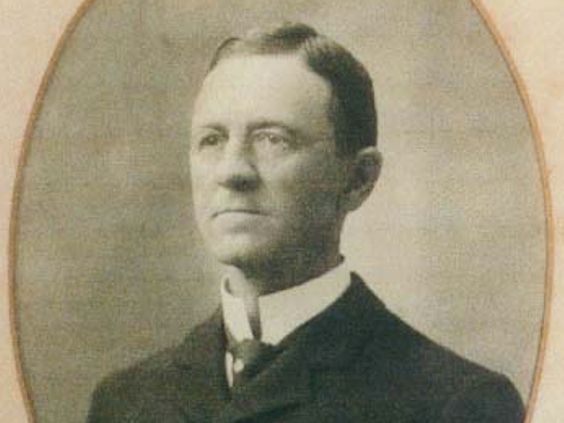Patrick Henry Boisseau was born October 17, 1850 in Dinwiddie county, a descendant of French Huguenots who settled that part of the state in the late 1700’s. He was educated at Wingfield Academy before joining up to fight in the Civil War at the age of 15.
Mr. Boisseau first arrived in Danville with his brother, William, on July 1st 1870. William acquired the position of city sergeant and hired his younger brother as assistant. The two maintained their posts for seventeen years, until William died of pneumonia in 1888. Patrick then took his brother’s place as City Sergeant.
Amongst Mr. Boisseau’s responsibilities was the serving of summons to witnesses and jurors, which required miles of walking each day. He was also in charge of the care of prisoners, toward which he was famously generous, providing them lavish dinners on major holidays, which he paid for from his own pocket.
It was also a part of Mr. Boisseau’s responsibilities to perform the execution of prisoners sentenced to death for murder. It’s believed there were six hangings in Danville, of which Boisseau oversaw each. The only occasion on which he balked was in 1896 when Jim Lyles and Margaret Lashley were sentenced to hang for plotting the murder of Lashley’s husband. Mrs. Lashley, a few hours before the appointed time, sent for Boisseau. She had been told that he who would be carrying out the execution and she asked him questions regarding the details and was particularly anxious about any potential suffering. Affected by the conversation, Boisseau phoned governor McKinney in Richmond to inquire if there was any doubt at all about Mrs. Lashley’s guilt. The Governor assured him that the sentence had been declared and must be carried out.
“The art of hanging people…,” as Mr. Boisseau explained to the Bee in October of 1924 when he was interviewed upon the anniversary of his record-breaking 53 years of service, “was to kill quickly without mutilation of the body. Another prime requisite is the knotting of the noose and the ability to place it about the neck of the impending victim so that when the body has fallen the neck shall be broken and strangulation shall not ensue.”
The executions took place in a vacant space between the jail and courthouse, where a 25 foot plank fence was erected to prevent spectators. In most localities executions were a public spectacle, but Boisseau felt that the event should be private and solemn. The only spectators were twelve witnesses who were called to attend, selected similarly as jurors for a trial, and no fewer than two doctors.
In 1904, after the hanging of William Jones for murder, Mr. Boisseau appealed to the state to conduct private executions from the state prison in Richmond. A bill was drafted and eventually passed. It’s possible that the invention of the electric chair in 1907 provided the means and necessity to bring Boisseau’s bill into law. In 1908 municipal executions were banned and capital punishment was centralized.
Mr. Boisseau lived for many years at 867 Paxton Street with his wife, Susie Dean Wicks Boisseau of Kentucky. The couple had two daughters. Their first child, a son, died in infancy.
Mr. Boisseau maintained his position as city sergeant until his death in 1932 at 82 years of age. Harry Wooding lamented at the time that Mr. Boisseau was the last remaining city official occupying a post when he first became mayor of Danville. His 61 years of service set a record for any public servant at the time and probably since.
